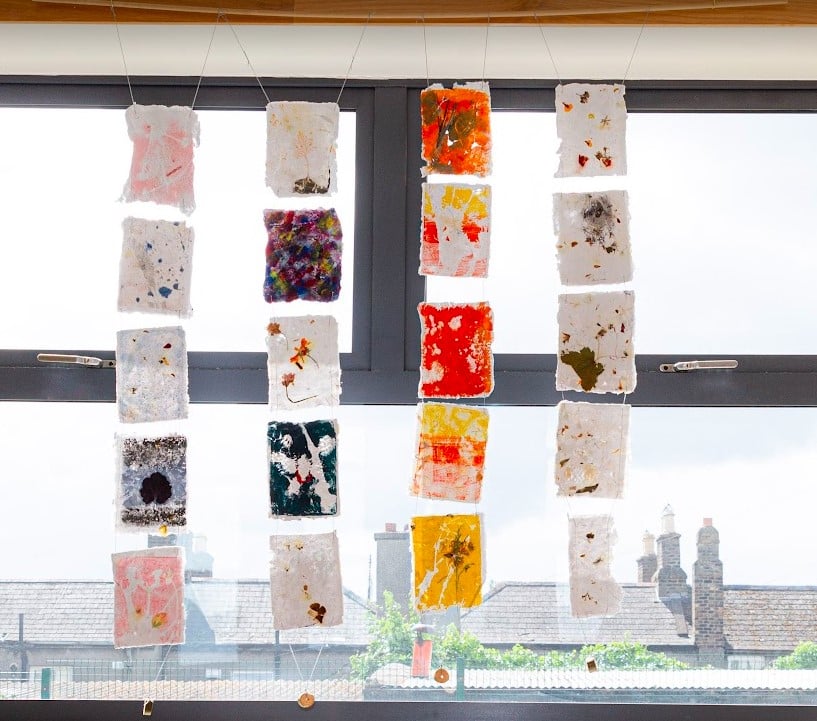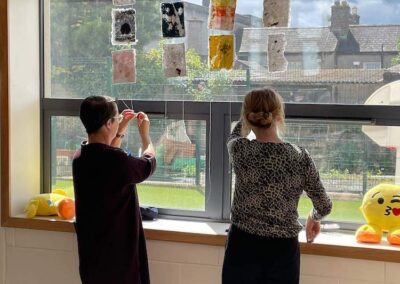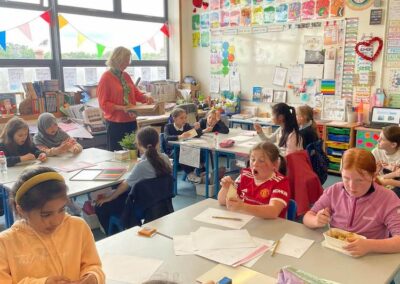School Workshops
Printmaking Workshops
Tailored to requirements and budgets
Offered in Studio in Temple Bar and in Schools.
In our printmaking workshops children have the opportunity to learn, explore and create their own original prints through the a range of printmaking techniques.
Workshops offered in Screenprint, Drypoint & Etching, Relief printing and more.
Aims and outcomes of our workshops:
- To introduce children to printmaking, the history of print and its relevance in the print world today.
- To introducing and demonstrating how copies were made before the invention of photocopiers and how the idea of multiples has evolved over time.
- To produce works that express their sensibility and creativity.
Black Church Print Studio is happy to facilitate outreach to schools and we can provide all portable equipment, materials and tools. We also facilitate this programme in our studios in Temple Bar in Dublin city.
Workshops can be tailored to suits all ages and requirements. Please do not hesitate to get in contact directly for futher information.

The Outdoor Classroom Project 2022
Stanhope Street Primary School, Dublin 7
Black Church Print Studios artists Caroline Byrne, Siobhan Cox and Education Curator Jean Mann, worked on an Outdoor Classroom project with 4th Class pupils from Stanhope Primary School in Stoneybatter Dublin 7.
The Outdoor Classroom Project used the outdoor environment for research purposes, gathering natural materials and artmaking.
Project Artists shared contemporary art practice with pupils and worked with a collaborative focus, generating ideas with the group to form a collaborative artwork, process and intervention in the school building.
The artists made handmade paper with the children, incorporating natural elements and pressing plants into this handmade paper, which they then printed on together.

Session 1: Laying foundations for the project.
After looking at examples of handmade paper prints from Caroline’s artwork, children from 4th class foraged for organic materials, leaves, flowers and plants in their schoolyard to use in creating their own handmade paper. These precious samples were then carefully carried back to the classroom where the natural materials were pressed onto blotting paper for use later in the project. Pupils then made natural dye in jars using onion skins, beetroot and marigold petals they had collected. Our final fun task for the day was to tear up school recycling paper which was put to soak to make paper pulp for stretching out next week..
Session 2 – paper making.
Today children learned the process of making handmade paper. Using recycled school paper the girls shredded last week, we further blended this soaked shredded paper into pulp. Then using a mould and deckle, children worked together in groups sieving the pulp onto the frame, while adding their pressed flowers and organic material. They then peeled this new paper onto a cotton sheet and hung up to dry on a clothesline.






















